The Clear Cut Episode Archive

British Columbia often falls at the epicenter of high-profile forestry issues. From massive wildfires to contentious protests, the story of BC forestry is operatic. We dive into the saga with UBC Professor Dr. Peter Wood, who
READ MOREexplains the relationships between industry, government, and society and how they’ve developed over the years. We’ll uncover the green veil of ‘Sustainable Forest Management’, and discuss ways to get to a system that works in the interest of people and nature.
READ LESSAdditional Resources: Script | Show Notes
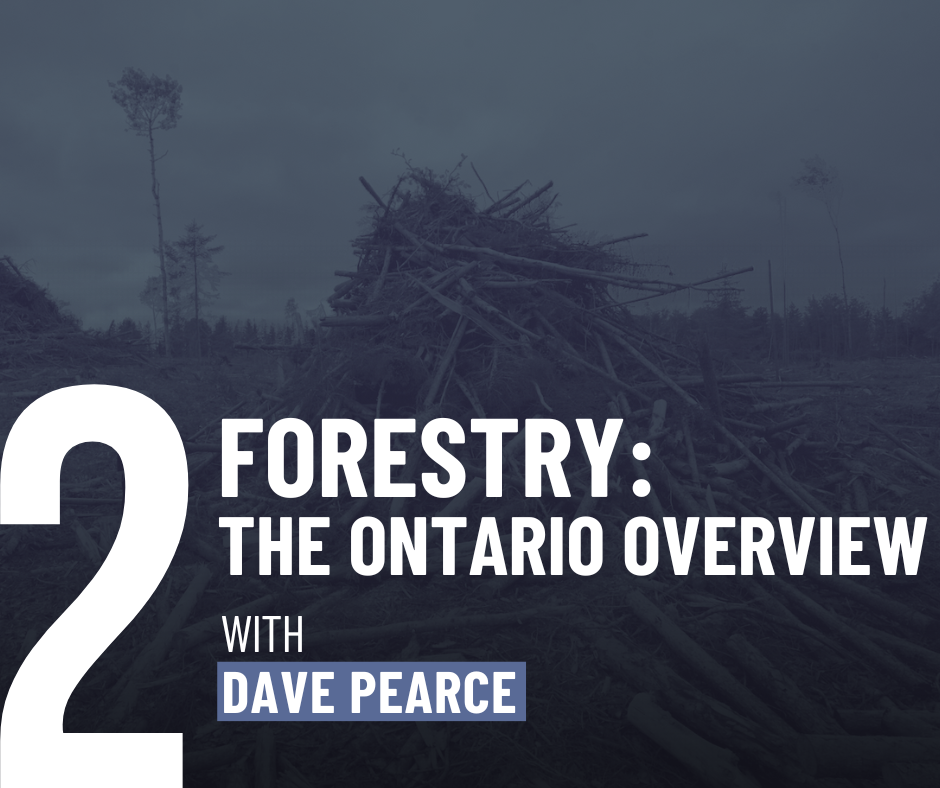
How did forest management start? How did it evolve over time? What is the rationale behind it, and where does it stand today? We sit down with our very own, Wildlands Senior Forest Conservation Manager, Dave to unpack all of
READ MOREthis, and explore some ways to push for a more sustainable system.
READ LESSAdditional Resources: Script | Show Notes
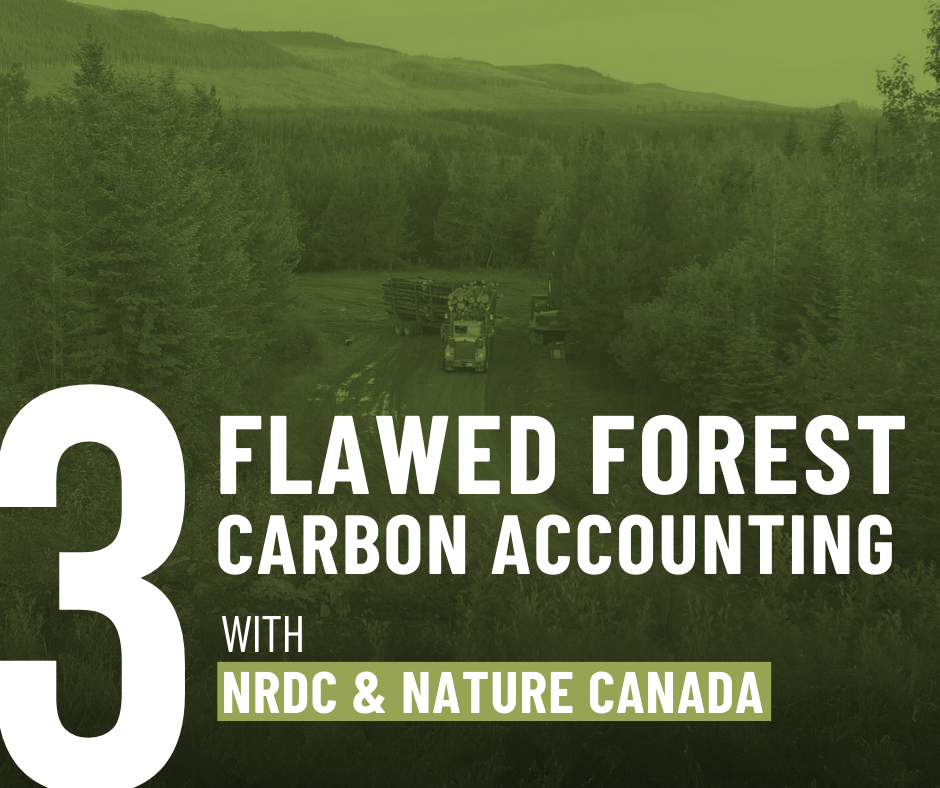
In April of this year, the Office of the Auditor General of Canada released a report, indicating that the Canadian government did not report the greenhouse gas emissions from human activities on forests clearly. Why is this? How
READ MOREdoes Canada count its greenhouse gas emissions from forestry, and how should it be different? We asked the team at the NRDC and Nature Canada, who have been working on this issue and have published a series of reports, detailing the flaws in Canada’s forest carbon accounting methods and what the forest sector’s emissions really are.
READ LESSAdditional Resources: Script | Show Notes
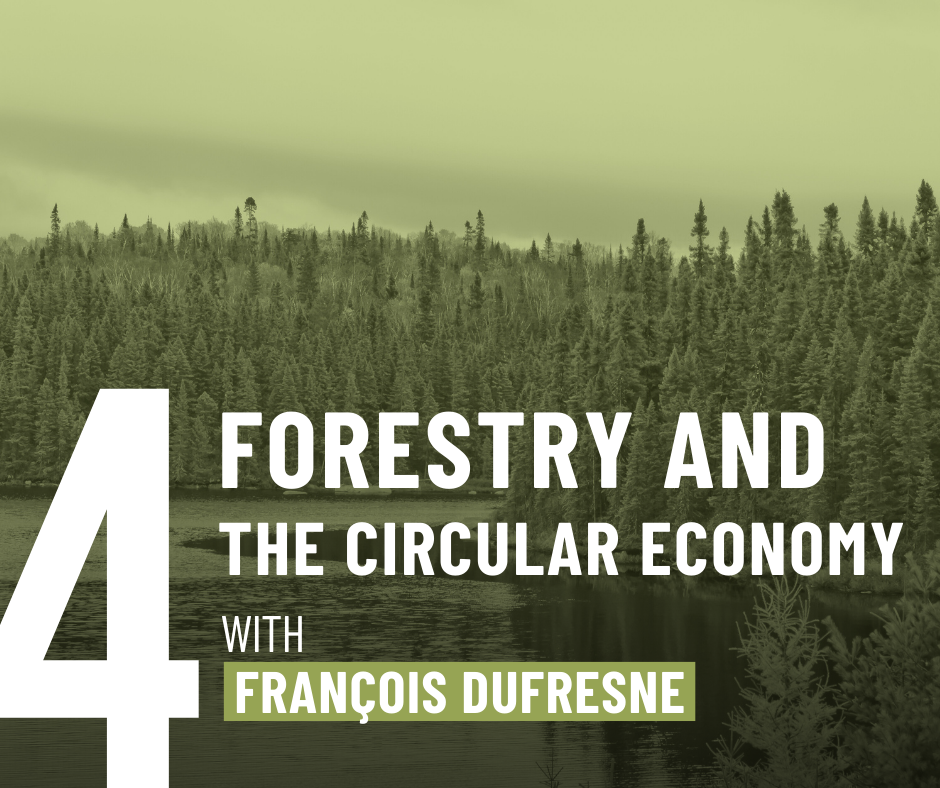
A rapidly warming climate and the decline of many at-risk species, impacts that are being felt around the world, are no stranger to Canada’s forests. The Canadian Forest sector, which is dependent on the health of Canada’s forests, is a
READ MOREbillion dollar industry with important choices to make. We sit down with François Dufresne, president of the Canadian Forest Stewardship Council (FSC Canada) to talk about how Canadian forestry can evolve with the current circumstances, and where forest certification can play a role in the transition.
READ LESSAdditional Resources: Script | Show Notes
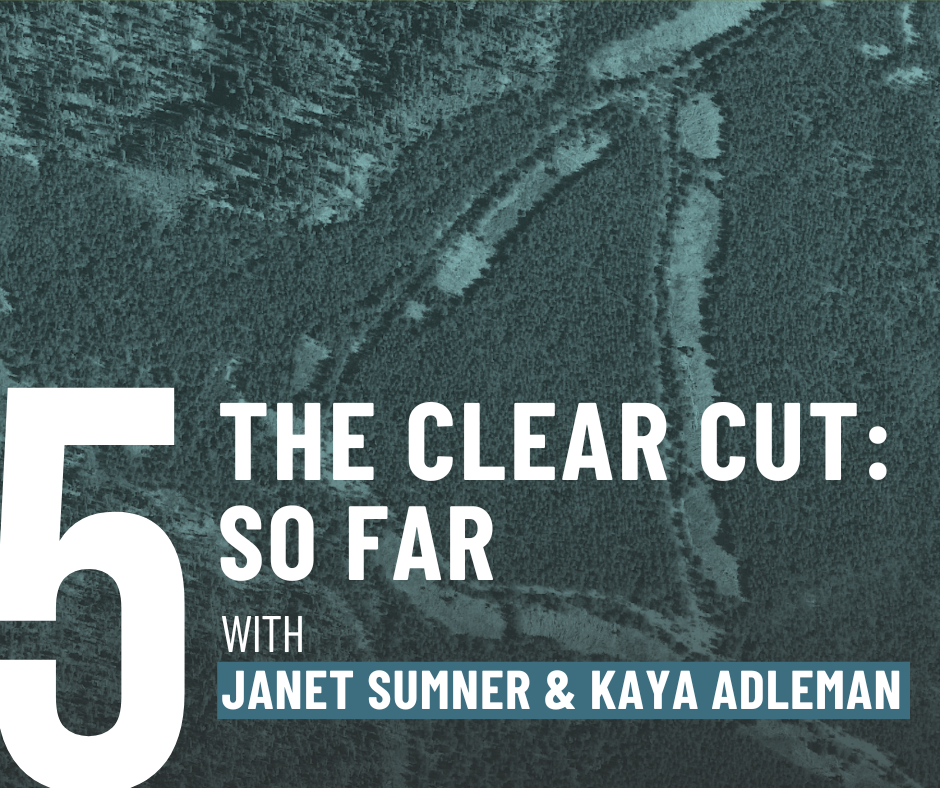
Are you enjoying listening to The Clear Cut, and learning about all things Canadian Forestry? On this special episode, join hosts Janet Sumner and Kaya Adleman as they unpack what we’ve heard so far. We’ll reflect on all the important
READ MOREthemes from our previous episodes: forest fires, the rationale behind logging, barriers to policy change and potential solutions! We’ll also discuss some of the burning questions we have and look for answers. If you’re feeling in need of a recap, this is a show you don’t want to miss!
READ LESS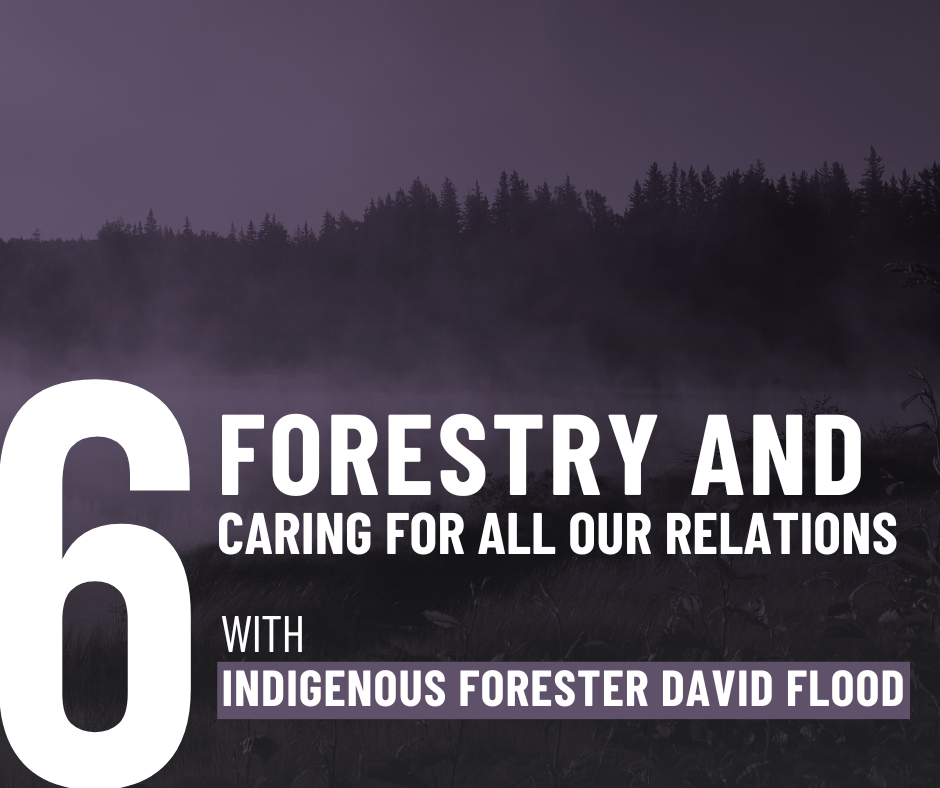
Indigenous people in Canada have been stewards of Canada’s forests since time immemorial. And as forestry happens on their lands, it’s about time that on The Clear Cut we step into our forest management conversation
READ MOREas Treaty Partners, to reflect on Canada’s relationship with First Nations people and the forest, and how we can build a path to better coexistence. In this episode, we sit down with David Flood, Registered Professional Forester and General Manager for Wakhohtoin Development GP, and learn about why forest management in Canada needs to be informed by Indigenous Knowledge, and what meaningful consultation with First Nations Communities truly looks like.
READ LESSAdditional Resources: Script | Show Notes
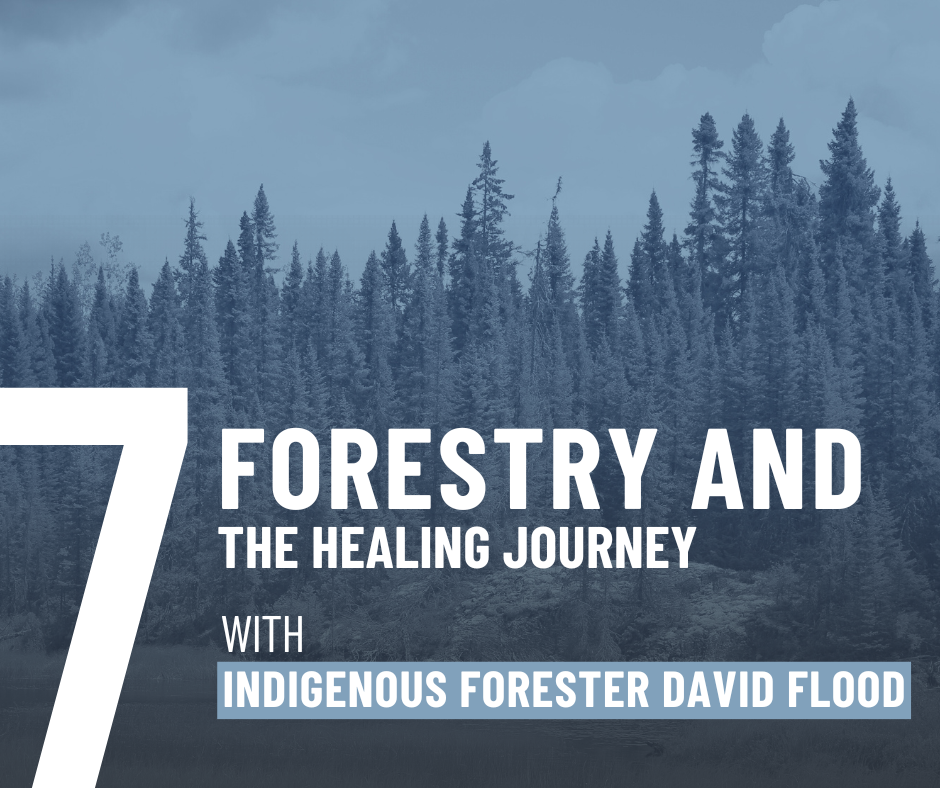
In this action-packed sequel to the next part of our conversation with David Flood, we also sit down with Anastasia Lintner, non-practicing lawyer and co-founder of Backloop Institute, to give us an overview of the regulatory
READ MOREframeworks with respect to Indigenous Peoples in Canada and their challenges. And of course, we dive back into our conversation with David to talk more about meaningful consultation, Canada’s Forest Stewardship Council (FSC), and going beyond minimum forestry regulatory guidelines to pursue a better path to coexistence with nature.
READ LESSAdditional Resources: Script | Show Notes
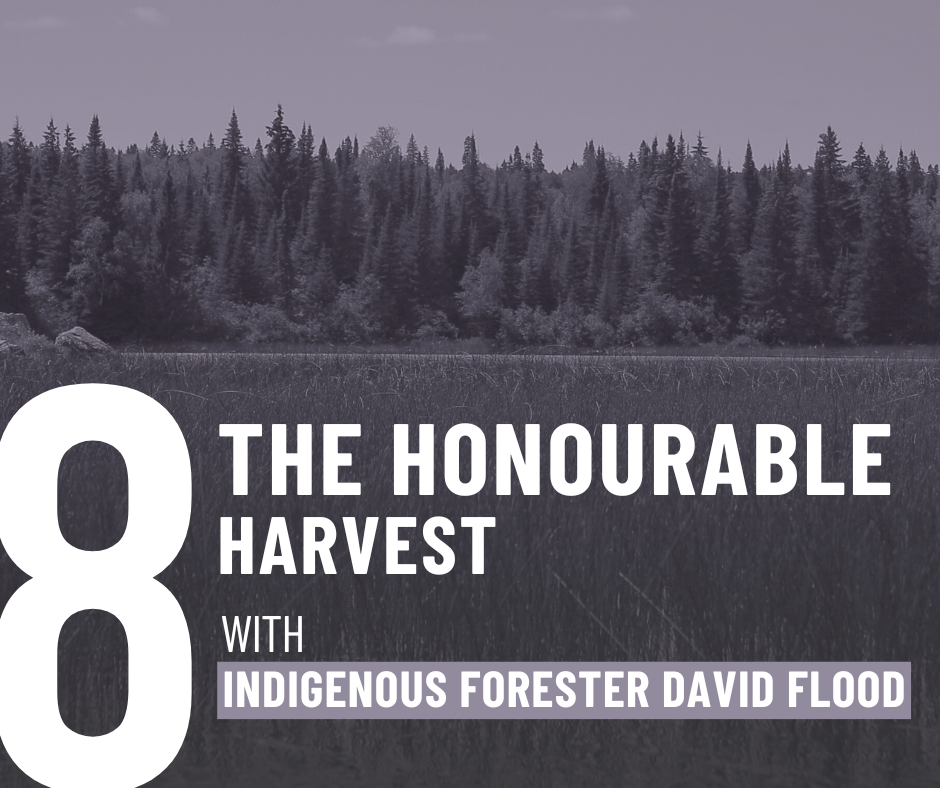
We return to our third and final chapter of our conversation with David Flood, Registered Professional Forester and General Manager for Wakhohtoin Development GP, to imagine a future for forestry that truly embodies the spirit
READ MOREof coexistence with Indigenous People and nature. How do we transform our fibre supply to capture the complete value of the forest, and be less wasteful? How can Indigenous innovations and technologies be utilised? What can we do to better respect the forest? Listen to find out!
READ LESSAdditional Resources: Script | Show Notes
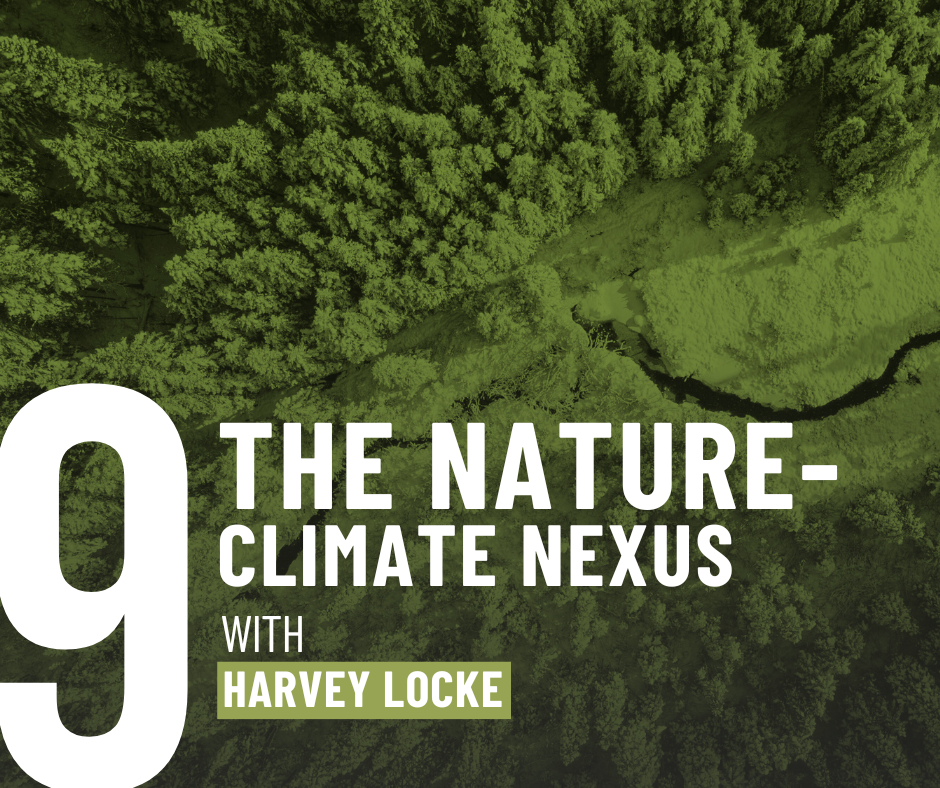
Check out the first part of our conversation with Canadian conservationist Harvey Locke, currently senior advisor for the Yellowstone to Yukon Conservation Initiative and Nature Needs Half. In our sit-down with Harvey, we
READ MOREdiscuss the “next big idea”. Why is conservation so important for climate change, and where do Canada’s forests fit into that? Listen now to find out!
READ LESSAdditional Resources: Script | Show Notes
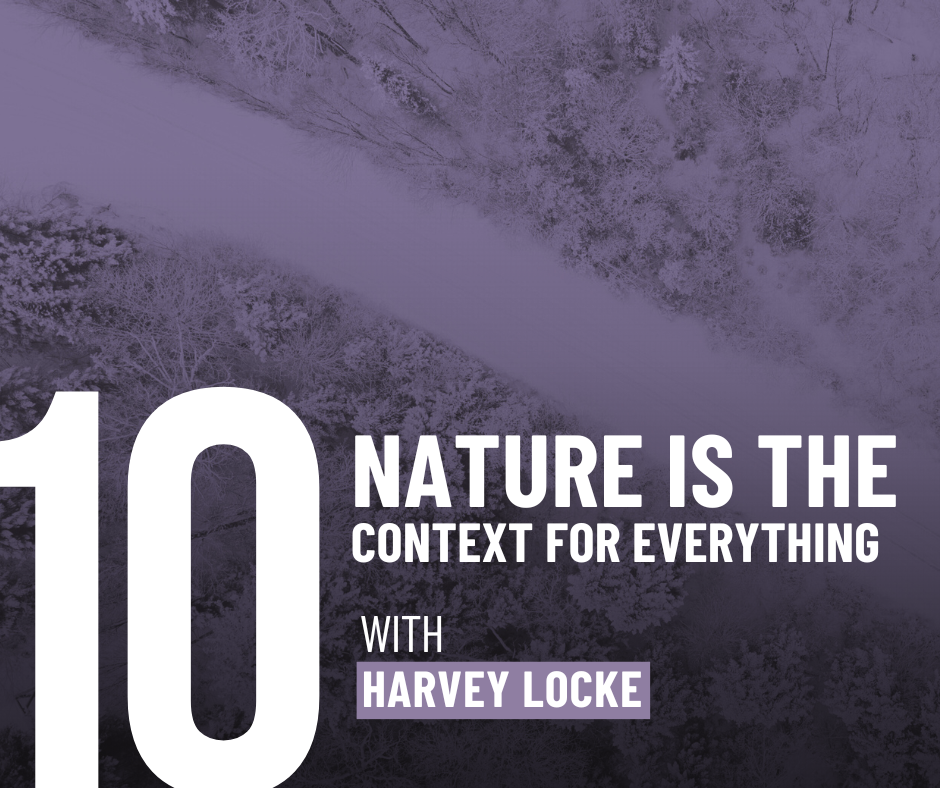
We dive back into our discussion with Harvey Locke, Canadian conservationist and current senior advisor for the Yellowstone to Yukon Conservation Initiative and Nature Needs Half. Harvey elaborates on how we’re losing out by
READ MORElimiting our climate policies to just “the smokestack side of the equation.” We gain some insights into the relationship between nature and the modern economy, and the limitations of the burgeoning carbon offset regime. As Harvey and Taylor Swift might say, we’re not “out of the woods yet” when it comes to getting these approaches right.
READ LESSAdditional Resources: Script | Show Notes
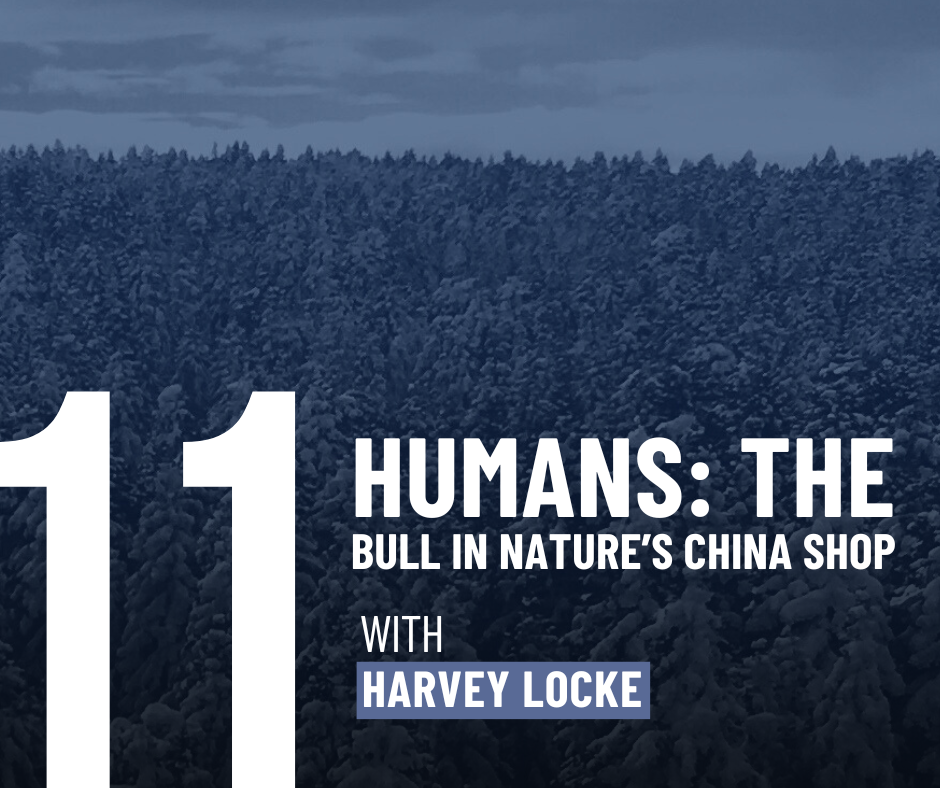
Our trilogy series with Canadian conservationist Harvey Locke closes out with a splash. As Taylor Swift and Harvey would say, “Are you ready for it?” Harvey answers some big questions about his big ideas. Can those in
READ MOREpower be attuned to change? What does that look like in practice? Harvey also bestows us with some much needed hope this episode. Humanity has collectively acted to change for the better before… when? Listen now to find out.
READ LESSAdditional Resources: Script
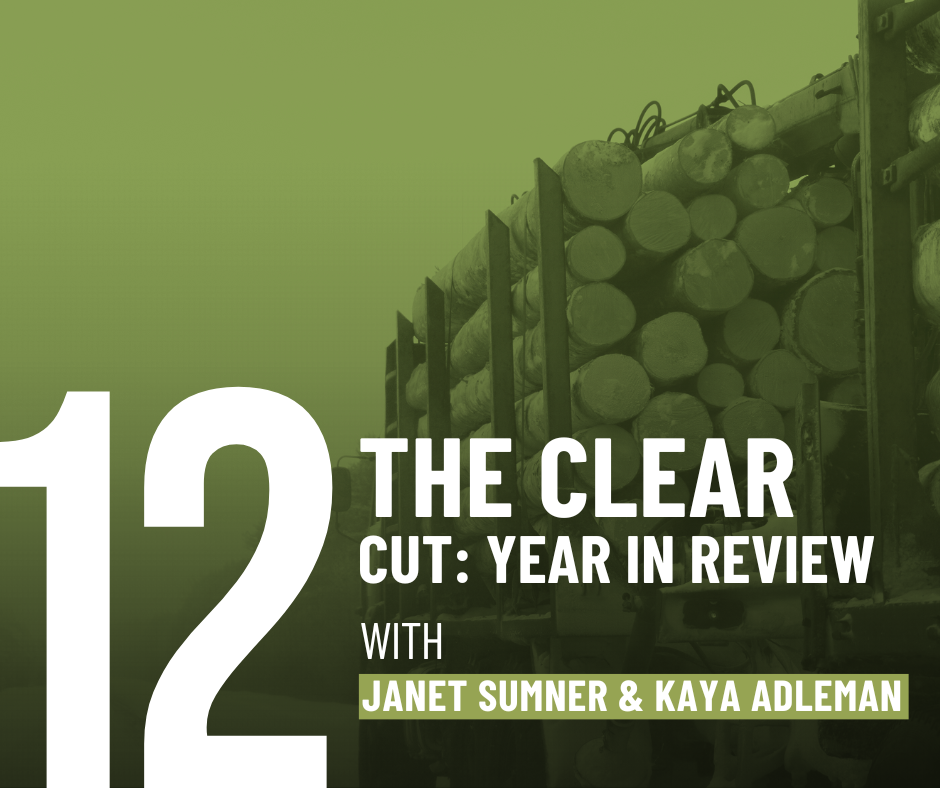
Happy holidays from The Clear Cut! As a belated holiday gift, we’re bringing you an awesome episode to wrap up 2023. This was a wild and info-packed year. We learned about the flaws in Canada’s forest carbon accounting
READ MOREsystem, and the problematic nature of forest management practices in both British Columbia and Ontario. We also explored the case for a transition strategy of Canada’s fibre economy, and why it’s important that we integrate Indigenous knowledge systems into forest policy. And finally, we discussed the need to connect nature to our climate frameworks, in order to tackle the climate and biodiversity crises’ head on. Janet and Kaya pull together some of their favorite moments from The Clear Cut this year, and why it all matters.
READ LESSAdditional Resources: Script
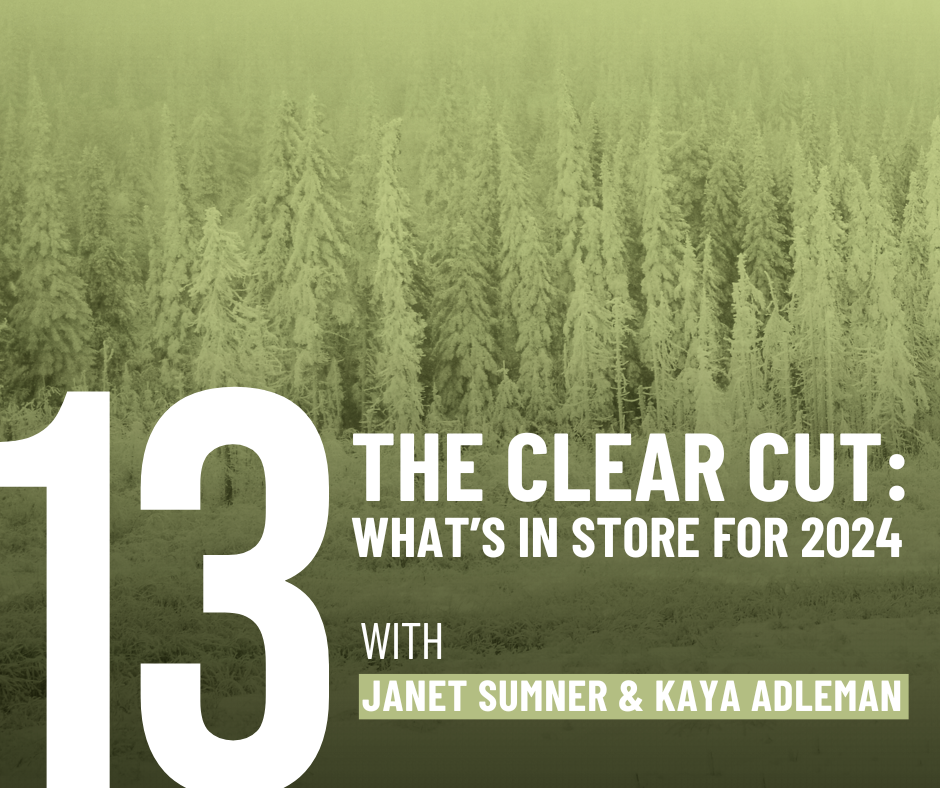
Happy New Year from The Clear Cut! Dive back in with a sneak peek of all the exciting things we want to cover on the podcast this year. From cumulative impacts, to wildfires, to defining forest degradation, there’s so much more to
READ MOREexplore in Canada’s forests.
READ LESSAdditional Resources: Script
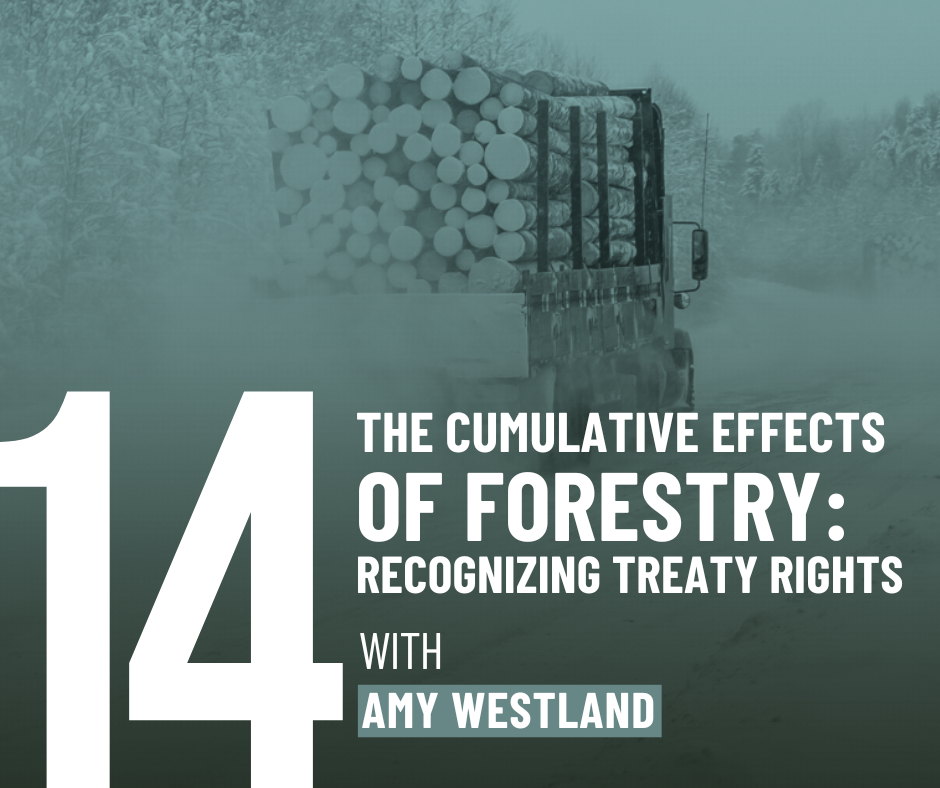
We’re excited to be back with a new episode taking a closer look at a cumulative impacts (or combined effects of resource extraction over time) case happening in Ontario. Missanabie Cree First Nation, Brunswick House First
READ MORENation, and Chapleau Cree First Nation have filed a case against Ontario, asserting the government has degraded the boreal forests in the province and inhibited their livelihoods, violating their treaty rights. We speak with attorney Amy Westland to get greater context for the case and why it’s so important for moving forward on the path to Reconciliation with Indigenous Peoples and the health of our forests.
READ LESSAdditional Resources: Script | Show Notes
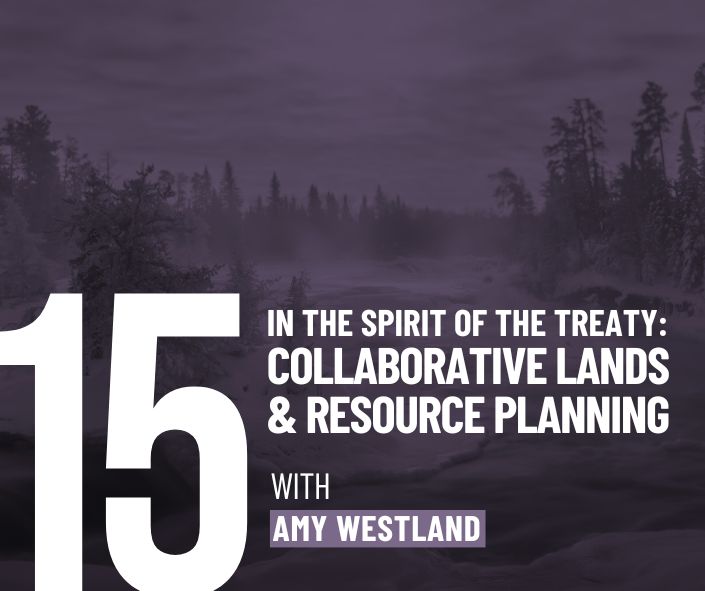
We dive back into our conversation with constitutional lawyer Amy Westland to dig deeper on the case filed against the Ontario government by Missanabie Cree First Nation, Brunswick House First Nation and Chapleau
READ MORECree First Nation. We cover the limitations of Canada’s exercise of consultation with First Nations, and why these cases could be a game-changer for the future of resource management decisions. How can this be to the benefit of our relationship with Indigenous Peoples, our environment, and society as a whole?
READ LESSAdditional Resources: Script | Show Notes
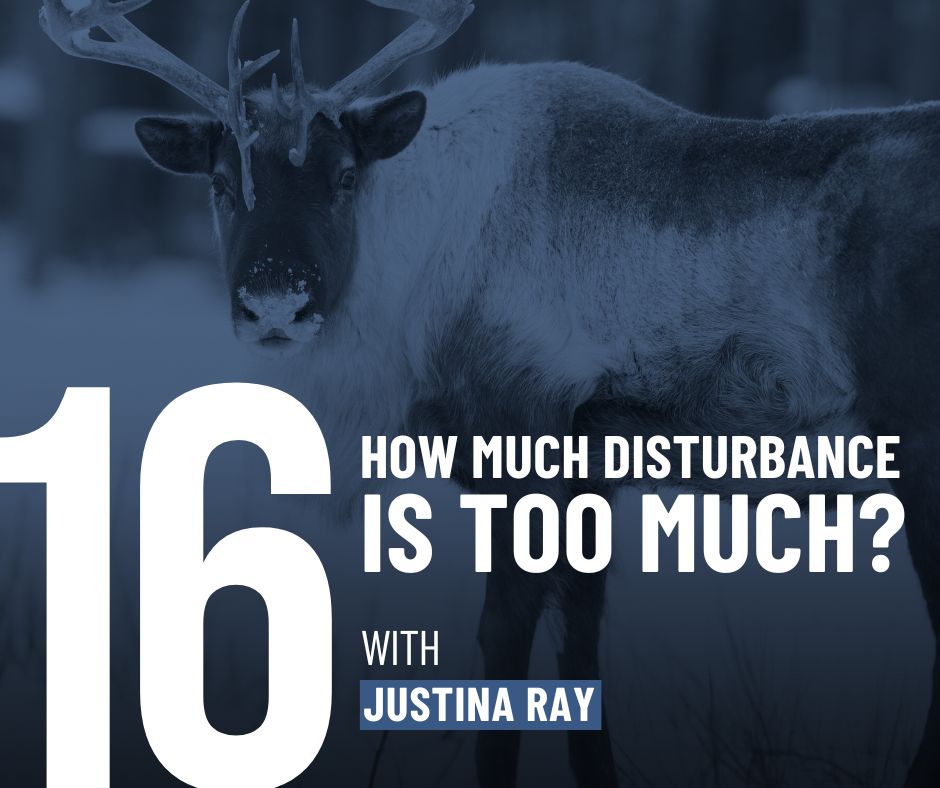
We sit down with Justina Ray, President and Senior Scientist at Wildlife Conservation Society Canada, to talk all things caribou. Why are they important from a conservation and a forestry standpoint? How are they monitored?
READ MOREWhat are the cumulative effects of disturbance to their habitat? Tune in to find out!
READ LESSAdditional Resources: Script | Show Notes
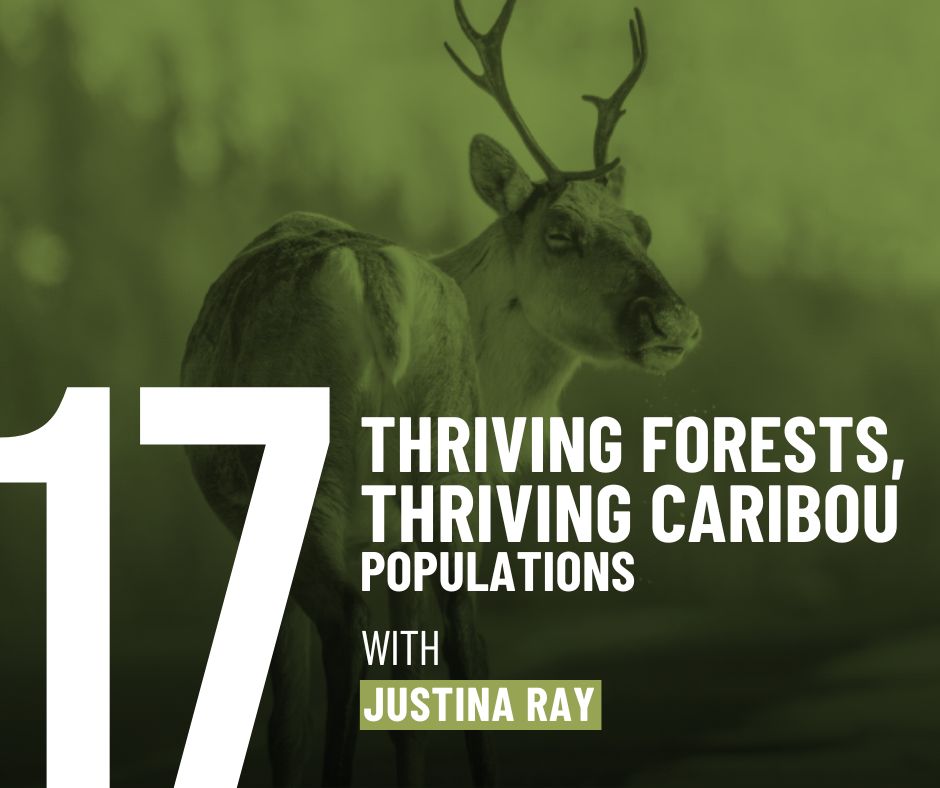
We return to our conversation with Justina Ray, President and Senior Scientist at Wildlife Conservation Society Canada, to pick her brain on caribou. What do caribou conservation strategies look like in practice? Do they lead to
READ MOREself-sustaining populations? What are some of the current challenges? All this and more.
READ LESSAdditional Resources: Script | Show Notes
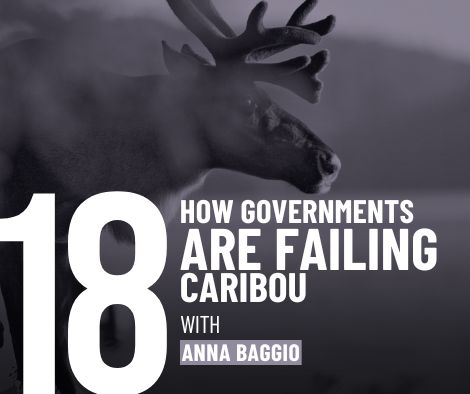
Hot on the heels of our caribou science conversation with Justina Ray, we turn to the policy side of the equation with Wildlands’ own in-house policy expert on Caribou conservation, Anna Baggio. You’ll hear her
READ MOREunvarnished take on implementation of both the federal Species At Risk Act and Ontario’s Endangered Species Act. In spite of agreements and lofty goals, governments continue to prioritize harmful industrial activities in threatened habitat instead of giving caribou time and space to recover. All is not lost though. Anna shares her passion and drive and how you can make a difference.
READ LESSAdditional Resources: Script | Show Notes
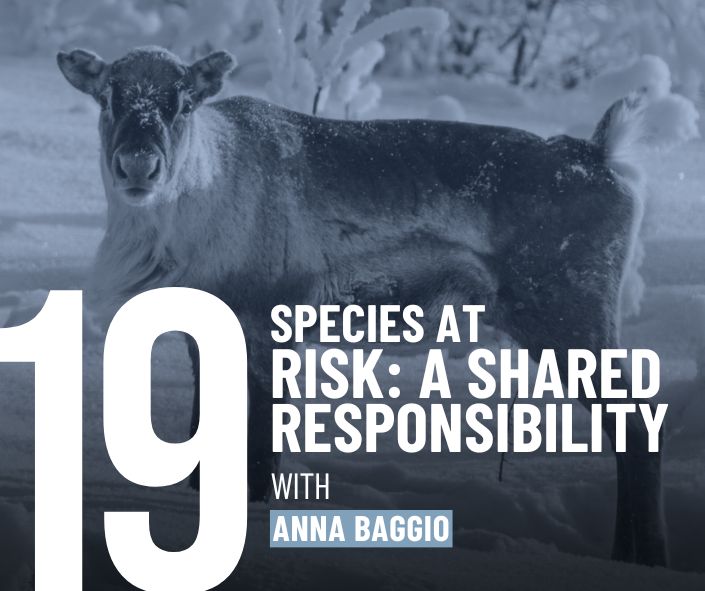
We return to the second part of our conversation on caribou policy with Wildlands’ own, Anna Baggio. If the Ontario government won’t protect caribou ranges from the looming encroachment of industry, who will? What’s the
READ MORErole of the federal government, and what has been done so far? All this, and more.
READ LESSAdditional Resources: Script | Show Notes
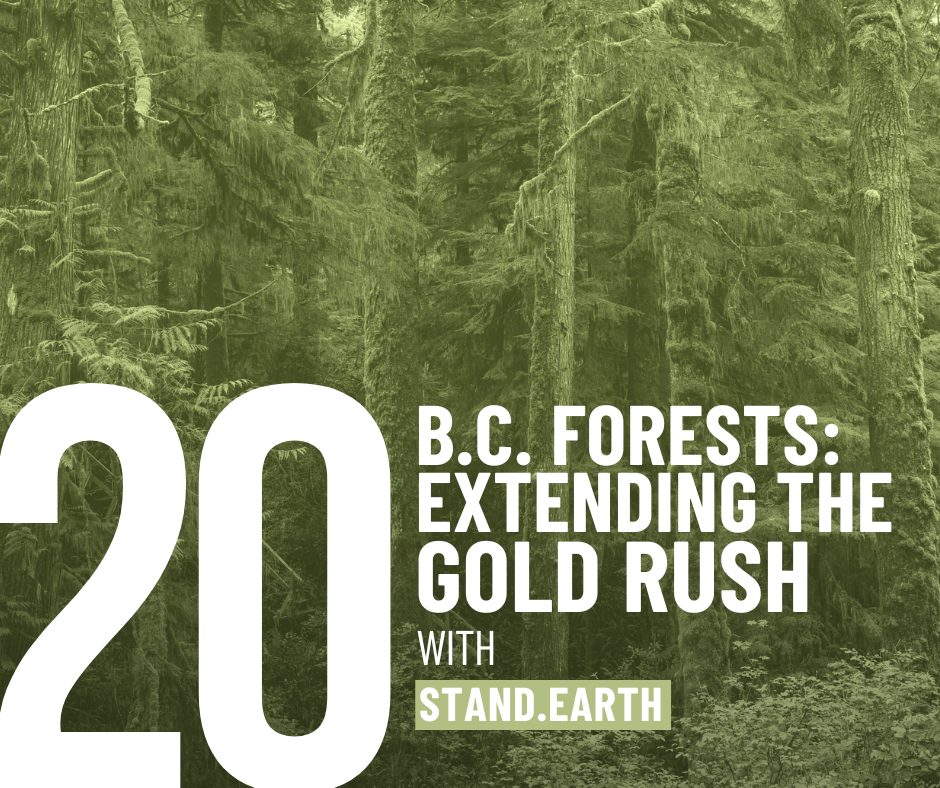
We’re in beautiful British Columbia this week with STAND.Earth’s Richard Robertson and Tegan Hansen talking forestry on Canada’s west coast. In the first of two episodes, we talk to our guests about STAND’s forest campaigns in B.C.
READ MOREWe cover the province’s approach to forest policy, how government and industry see B.C.’s forests as a tool in the renewable energy transition, and what the shocking carbon implications are.
READ LESSAdditional Resources: Script
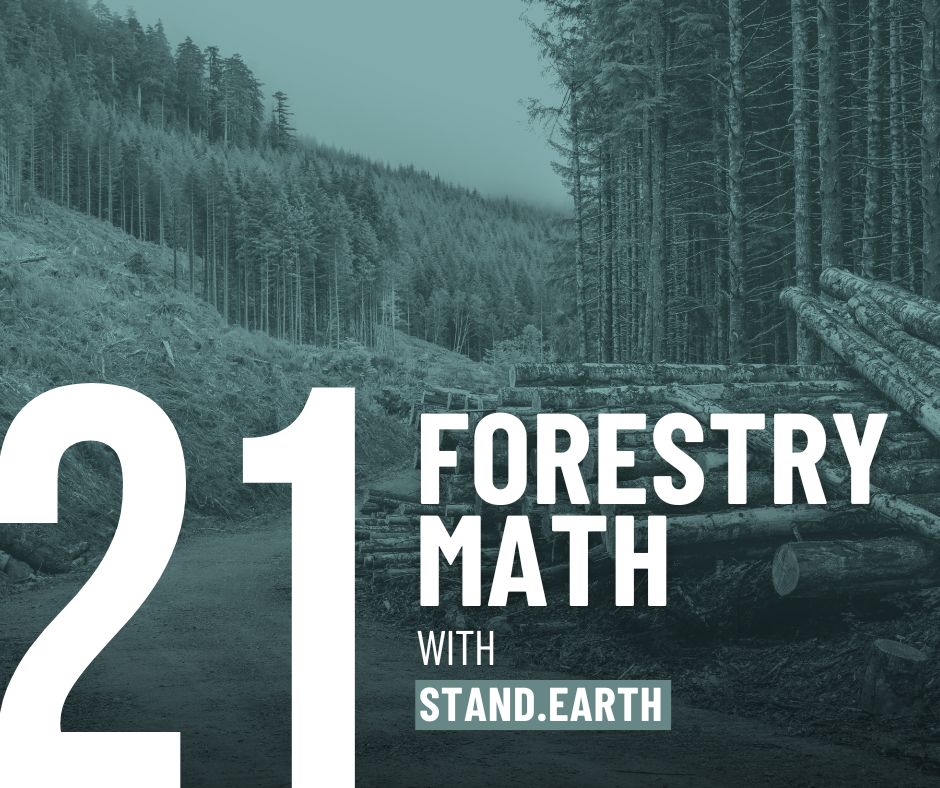
This week, we return to our conversation with Richard Robertson and Tegan Hansen from STAND.Earth on forestry issues in British Columbia. Wood pellets, or biomass fuels, from B.C.’s forests are being touted as a large-scale,
READ MOREcarbon neutral energy source. Does the carbon accounting behind those claims add up? What are some alternative solutions for the future of the forestry industry?
Richard and Tegan also share their experiences at last year’s climate COP in Dubai with us. Find out what it was like to be an observer at the biggest stage for international climate negotiations and how Canada’s forests can be affected.
READ LESSAdditional Resources: COMING SOON
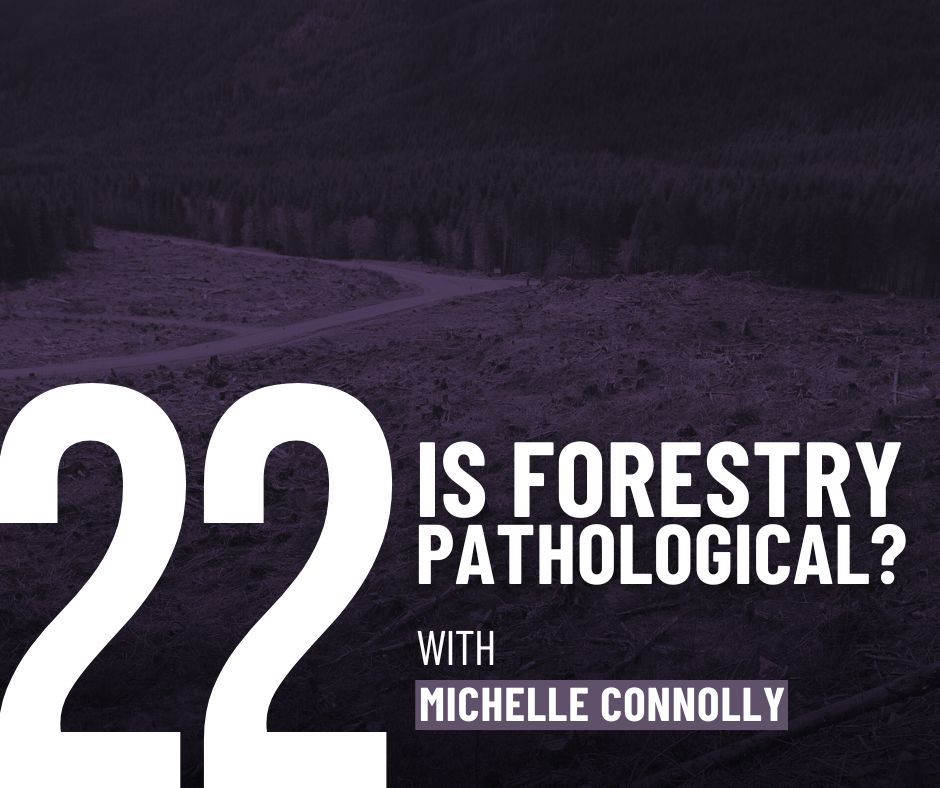
If natural forests are ‘self-willed, self-managing, and self-replacing’ to respond and adapt to disturbances like fire and pest-outbreaks, should we be logging more as some suggest? Or should our approach be more precautionary?
READ MOREThis week, Michelle Connolly from Conservation North takes us back into the forests of British Columbia. She breaks down for us the severity of B.C.’s industrial logging impacts that her organization has documented through spatial mapping. While logging is advertised as a necessary means to manage B.C.’s forests, including for pests and wildfires, we unpack why fire and pests are actually part of the natural forest cycle.
READ LESSAdditional Resources: COMING SOON
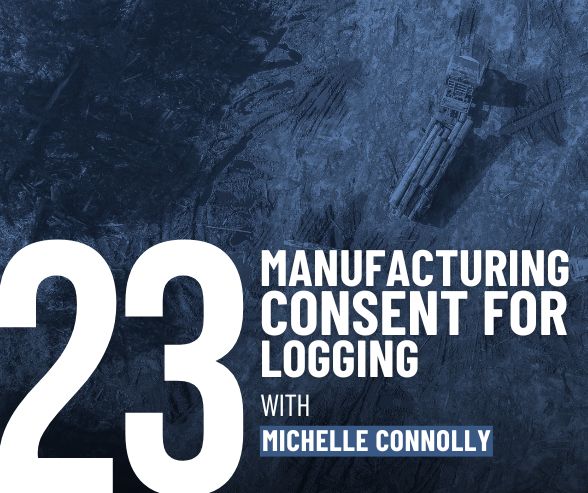
In part 2 of our conversation with Conservation North, Michelle Connolly gives us a lesson in forest ecology and forestry semantics. How does British Columbia and the forestry industry use seemingly ‘green’ language to justify more
READ MORElogging of the province’s natural forests? Who is forestry sustainable for? The planet? The species? Or the companies?
We also get a sneak peek into Conservation North’s new report on U.K. biofuel producer Drax, and how they’re continuing to source materials from rare old growth forests.
Additional Resources: COMING SOON
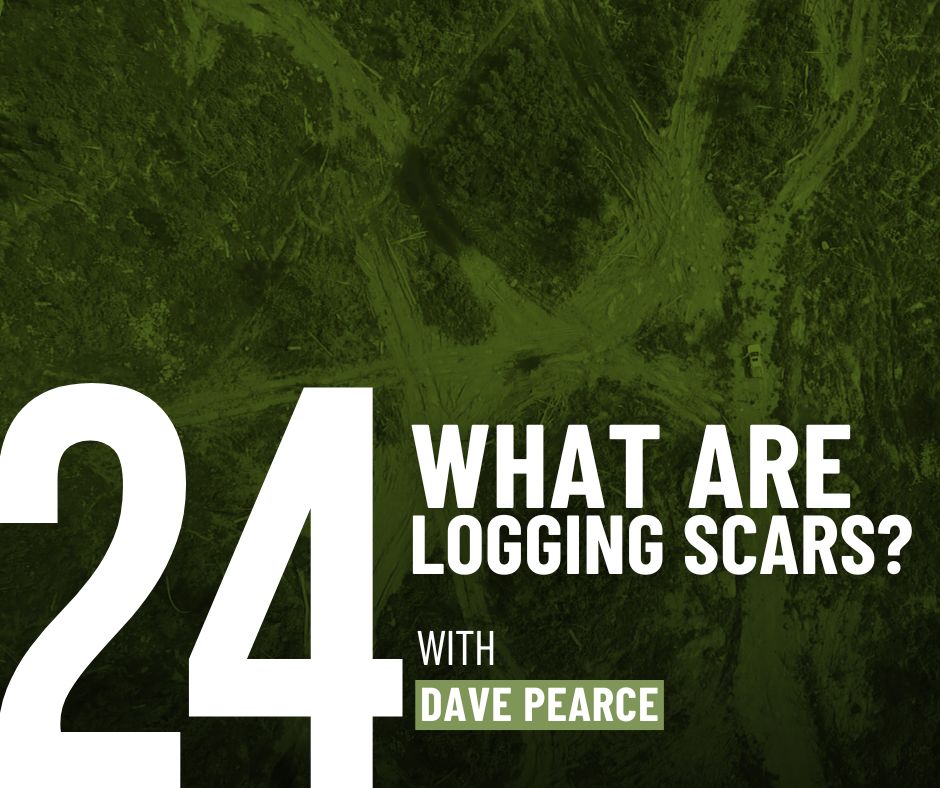
What happens to the areas of Canada’s forests that have been impacted by full-tree harvesting? According to international rules the term ‘deforestation’ only occurs when a forest is converted into another land use, like a
READ MOREshopping mall, farm or housing development. We don’t count formerly forested areas that are now barren as deforested, if the area remains designated for forestry. But could it, should it be classified as forest degradation? Our own Senior Forest Conservation Manager, Dave Pearce unpacks Wildlands League’s 2019 Logging Scars report on the subject. We discuss the genesis of this pivotal report. What kickstarted our investigation into areas that were still barren 30 years or more after logging? What did we assume going into this, and what did we discover? The findings may surprise you.
READ LESSAdditional Resources: COMING SOON
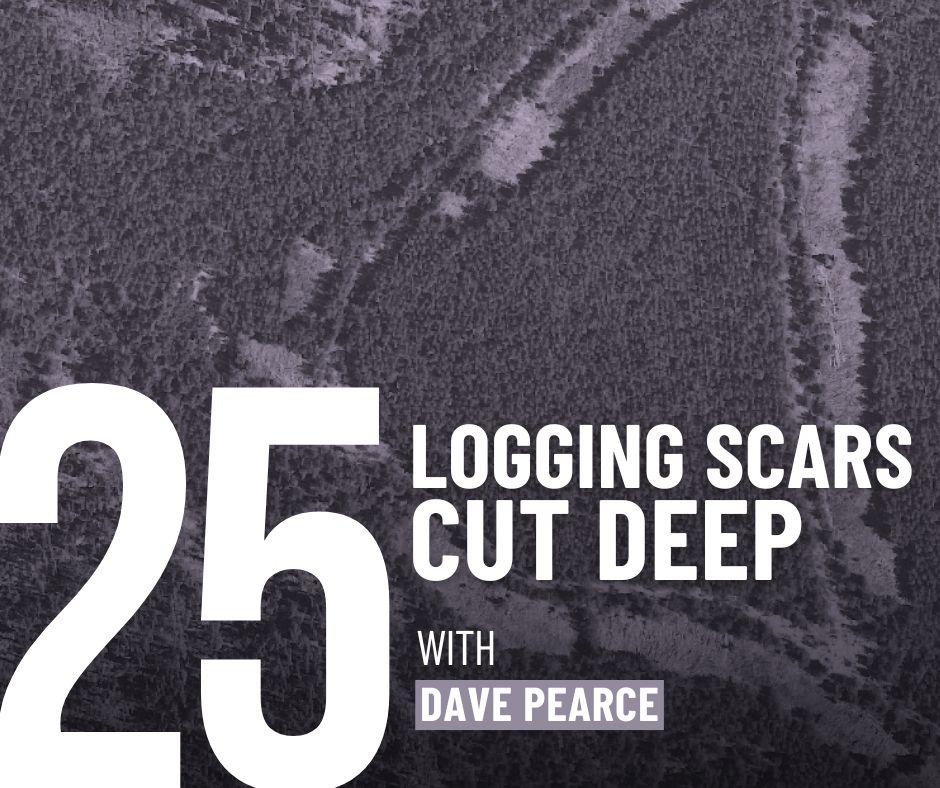
We return this week with our own Senior Forest Conservation Manager, Dave Pearce, to cover the wider implications of Wildlands’ Logging Scars report. In our last episode we learned that Wildlands League’s study showed an average of
READ MORE14% of the forest is not regenerated after one cycle of full-tree harvesting. While that may not seem like a significant impact to the forest, Dave explains why this isn’t the case. In addition to reducing our resilience to climate change, logging scars spell serious trouble for biodiversity as well. We give context to degradation in Canada’s forests and why there’s a need for higher quality data to better understand the impacts of logging on the landscape. Check out the Logging Scars webpage to read the report and see the eye-opening images.
READ LESSAdditional Resources: COMING SOON
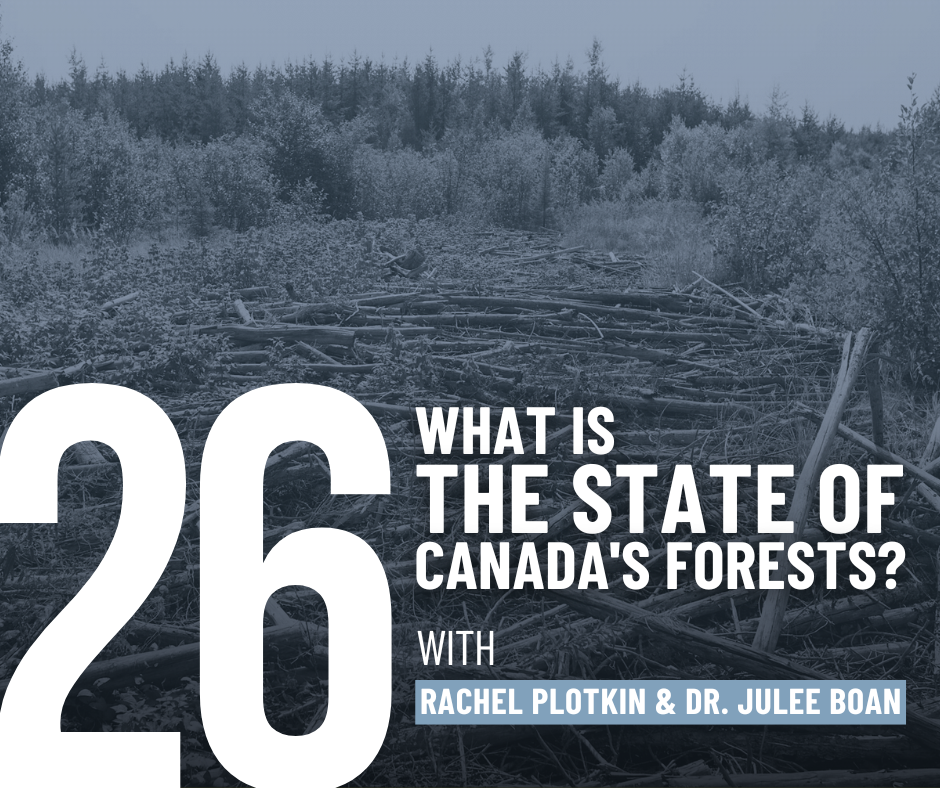
Every year the federal government publishes a ‘State of the Forest’ report which, touts itself as “a trusted and authoritative source of comprehensive information on the social, economic and environmental state of Canada’s
READ MOREforests and forest sector for 33 years.” But do these annual reports truly accomplish this promise? This year, 8 environmental organizations released their own report, The State of the Forest in Canada: Seeing Through the Spin, to challenge many of the conclusions in the government’s annual report. We sit down with the David Suzuki Foundation’s Rachel Plotkin and the Natural Resources Defense Council’s Dr. Julee Boan to discuss the details of this investigation. Why is the government’s annual report inadequate? What is missing, and what are the ramifications?
READ LESSAdditional Resources: COMING SOON
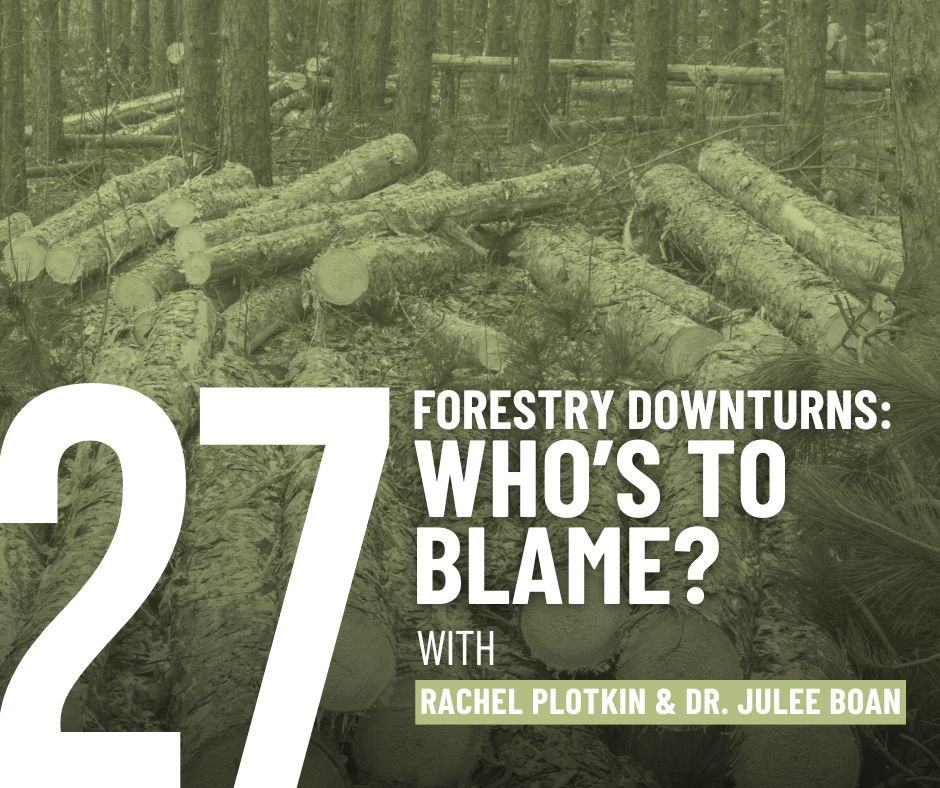
We return to our conversation with Rachel Plotkin from the David Suzuki Foundation and Dr. Julee Boan from the Natural Resources Defense Council. This week we’re talking caribou and the economics of forestry. The
READ MOREforest industry seems to have a convoluted relationship with species at risk- specifically caribou, since much of their habitat overlaps with forest areas where harvesting takes place. Julee and Rachel break down the two narratives that are simultaneously taking place. One behind closed doors that seems to understand the science and is amenable to protecting this indicator species, another in the public arena that paints caribou conservation as a threat to economic health. Are economic and environmental values inherently at odds? Or as Rachel says, is there “room for both”?
READ LESSAdditional Resources: COMING SOON

Last summer was a record-breaking wildfire season for Canada. As smoke blanketed major Canadian cities and even portions of the East Coast and Midwest of the United States, media coverage soared. This year, wildfire season has
READ MOREalready started. Experts are warning of another series of catastrophic impacts. What is driving these unprecedented, longer wildfire seasons? Is there something missing in the public narrative? In this episode, we’re looking for answers. This week, we set the stage for our wildfire inquiry by asking some of the pressing questions with a fire ecologist expert. We sit down with Jen Baron from the University of British Columbia for some insights. What are the main drivers? What is the role of forest management policies, and is there a disconnect between the two?
READ LESSAdditional Resources: COMING SOON
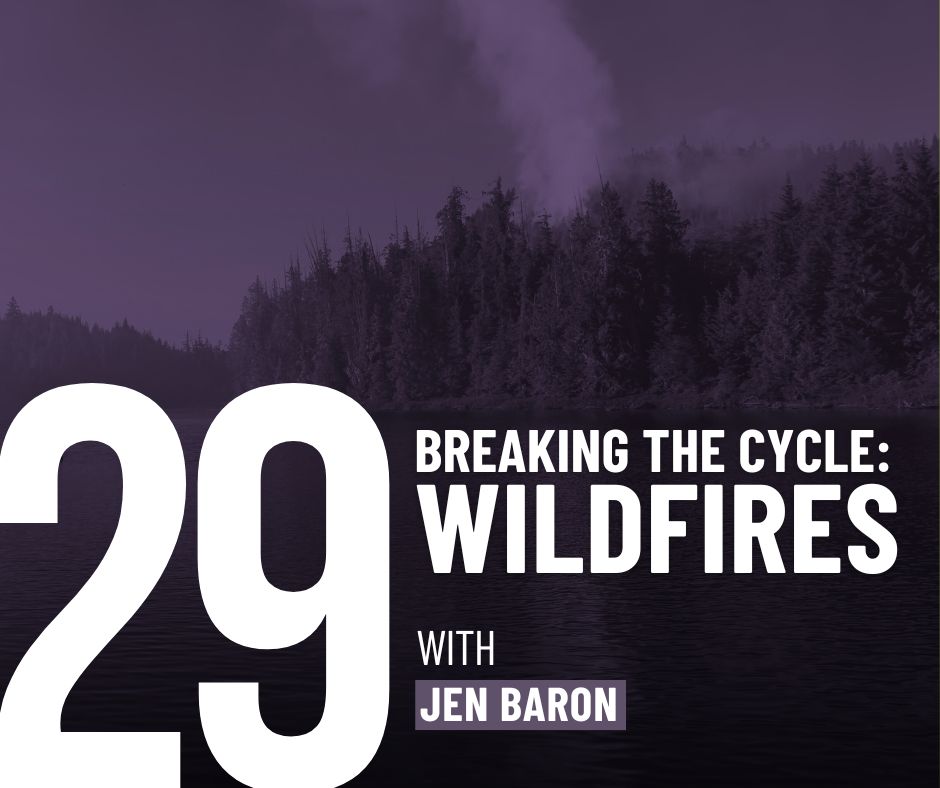
This week we return to our conversation with fire ecologist Jen Baron from the University of British Columbia. In our last episode, we explored the main causes of the severe wildfires we’ve been experiencing in recent years.
READ MORENow we turn our focus to strategies for managing those factors within our control.
We know wildfires are driven by topography, climate, and the availability of fuel. While we can’t alter a forest’s underlying topography, we can reduce the carbon emissions fueling climate change. And in the short term, we can improve forest management practices, such as fire suppression and clearcutting, to prevent an increase in flammable material. With Jen, we explore tools that can break the cycle of a century of fire suppression. What are the opportunities for forestry and what is missing from the public discourse on wildfires?
Additional Resources: COMING SOON

It’s been almost a year since Canada’s Online News Act was passed, and in response Meta blocked links to Canadian news on Facebook and Instagram. This has created a void of fact checked articles that meet journalistic
READ MOREstandards and ethics on those platforms. As a result, information about wildfires, forestry and forests from respected media sources is not shareable via social media. We sit down with Joan Baxter from the Halifax Examiner about her recent article on the growing problem of greenwashing in an age of digital information sharing. We discuss the Forest Products Association’s (FPAC) ‘Forestry for the Future’ advertising campaign that’s been proliferating across social media. Joan breaks down how this could be problematic in the absence of independent journalism on Canada’s forests available on those platforms. How can those concerned about Canada’s forests and climate become better at identifying industry public relations materials?
READ LESSAdditional Resources: COMING SOON

We return this week with journalist Joan Baxter, who dives deeper into her work for the Deforestation Inc. investigative series that showcases reporting from 300 journalists worldwide. Joan shares with us her findings on
READ MOREecologically destructive practices hidden behind sustainability claims. We learn about how Joan’s investigation into Canada’s logging industry helped uncover a web of corporate consolidation that has been aided by funding from taxpayers. We also discuss her book, The Mill: Fifty Years of Pulp and Protest, the story of taxpayer support for the Northern Pulp Mill in Nova Scotia and its history of “environmental racism” and public protests.
READ LESSAdditional Resources: COMING SOON
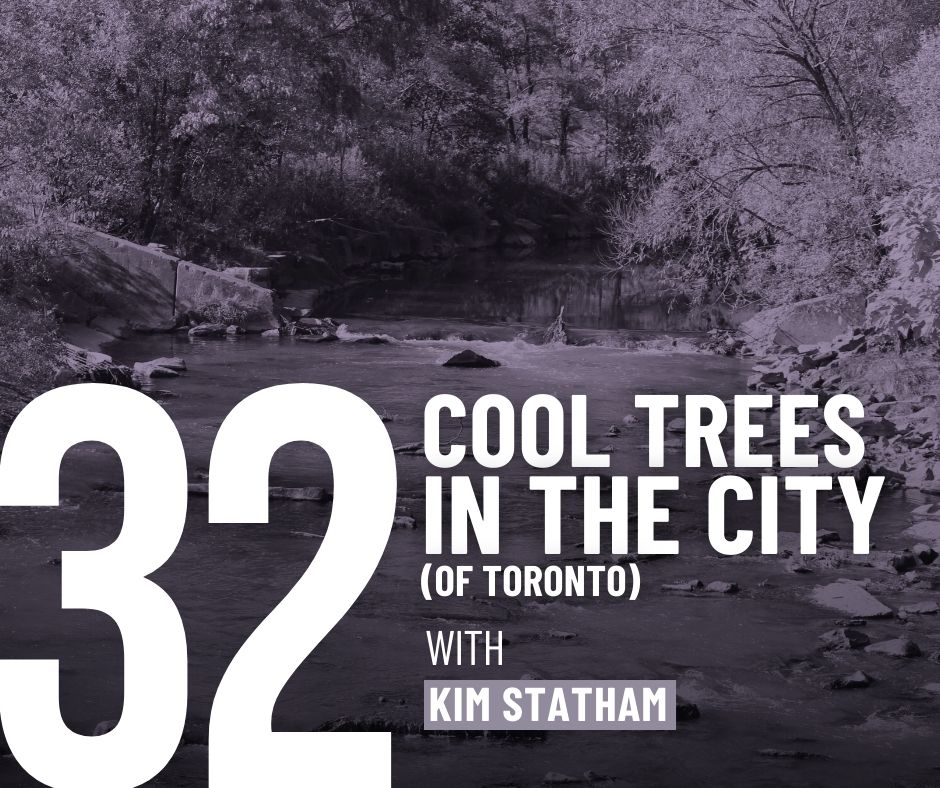
When we think of forest management and forestry, we often conjure up images of large swaths of untouched land with trees that span for kilometres on end. But did you know that forest management can play an important role
READ MOREin cities too? The shade of a tree canopy provides cooling in the city and trees help manage drought and floods. This week we sit down with Kim Statham, the City of Toronto’s Director of Urban Forestry to learn more.
Kim talks about what urban forestry is and her office’s role of managing, stewarding, and developing programming for Toronto’s urban forest. We discuss some of the challenges the city’s canopy is facing, what opportunities are available, and the programs the city is undertaking to meet its canopy cover goals and promote the urban landscape’s biodiversity and climate resilience.
Additional Resources: COMING SOON
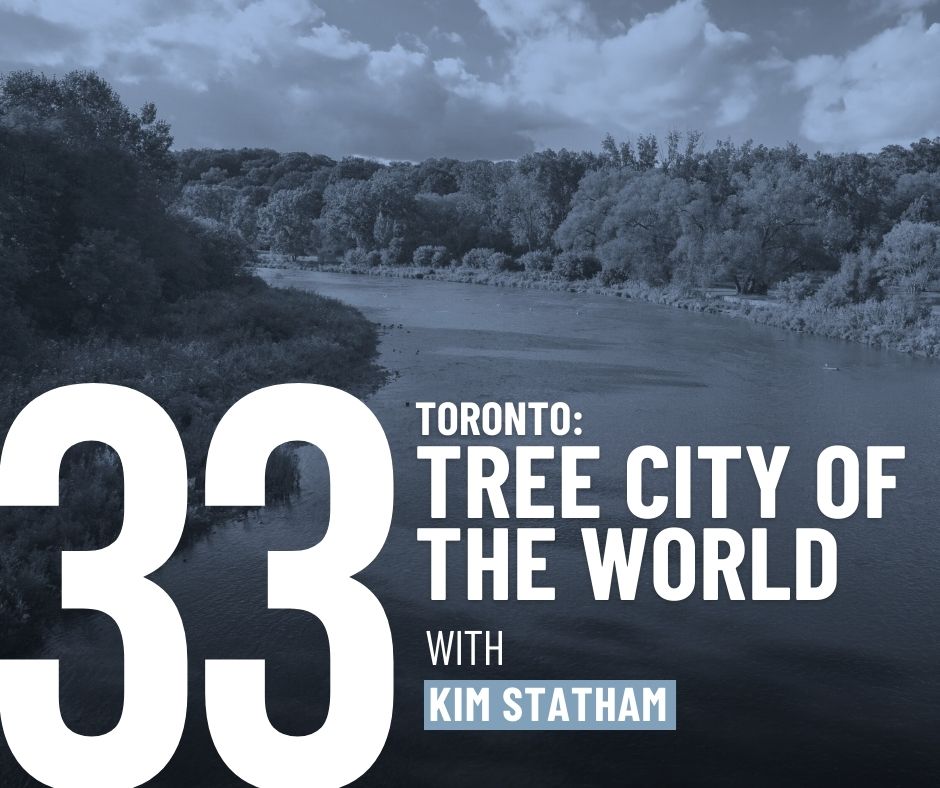
This week we return to our conversation with the City of Toronto’s Director of Urban Forestry, Kim Statham. Last episode we talked about some of the challenges and opportunities facing Toronto’s urban forest, but this episode we take
READ MOREa step back, and contextualize these issues more broadly. Kim discusses Toronto’s participation in the United Nations Environment Program, where cities from around the world collaborate to promote ecological restoration and facilitate knowledge exchange. In addition to the role cities play on the international stage to reach our climate and biodiversity goals, Kim explains how subnational governments can contribute through building both physical ecological corridors and relational ones. We also learn about how Toronto’s approach to urban forestry has earned its status as a leader in this arena.
READ LESSAdditional Resources: COMING SOON

Last year the European Union issued a new regulation (the EUDR) aimed at preventing the entry of products that originate from recently deforested land or have contributed to forest degradation into the EU marketplace. The
READ MOREEUDR is likely the most significant, but not the only, law or rule proposed by governments around the world to ‘clean up’ their supply chains when it comes to forest and agricultural products. Policymakers are increasingly working to do their part to meet global climate and biodiversity targets. Where does Canada, and its purported leadership in sustainable forest management, fit in? We sit down with Etelle Higonnet, who has been an advisor to the European Union on the EUDR. She explains the EU law and the other “family” of regulations on deforestation and forest degradation free products. We discuss the importance and implications of these rules, as well as the response from the Canadian government and forest industry groups. What are Canada’s arguments against these rules? Why are they making them? And what opportunities do these laws provide that we could be missing out on?
READ LESSAdditional Resources: COMING SOON

Did you know that the foothills of the Rocky Mountains in Alberta are home to incredibly valuable ecological landscapes? Sometimes called the current of the continent, three major river basins extend from this area, with some of
READ MOREthe water going to Hudson Bay, the Gulf of Mexico, and the Pacific Coast. This week we head back to western Canada to talk with Executive Director Katie Morrison and Conservation Science & Programs Manager Josh Killeen of the Canadian Parks and Wilderness Society’s (CPAWS) Southern Alberta Chapter. With the confluence of the mountains in the west, the grasslands to the east, and boreal forests in the north, there is a wide range of diversity in Alberta’s Rocky Mountains, including a 50 kilometer strip of forest that holds an incredible amount of biodiversity. In addition to the amazing nature in Alberta, the province also has a long history of natural resource extraction — especially as it hosts the fourth largest forestry industry in Canada. Josh and Katie take us on a tour of the region they work in, and set the stage to understand challenges facing these areas. What does forest management look like, and what are its impacts?
READ LESSAdditional Resources: COMING SOON

We return this week to our conversation with Executive Director Katie Morrison and Conservation Science & Programs Manager Josh Killeen of the Canadian Parks and Wilderness Society’s (CPAWS) Southern Alberta
READ MOREChapter. Last week they painted the landscape of Alberta’s headwaters for us. We learned about the incredible value of this region to the wildlife, species, and many communities (across the continent!) who depend on them. This week we explore some of the challenges these lands are facing in greater depth. How does the underlying approach to forest management make it difficult for protection? What is the government’s role? And what are the opportunities, particularly unique to this landscape, that could result in better outcomes for all?
READ LESSAdditional Resources: COMING SOON
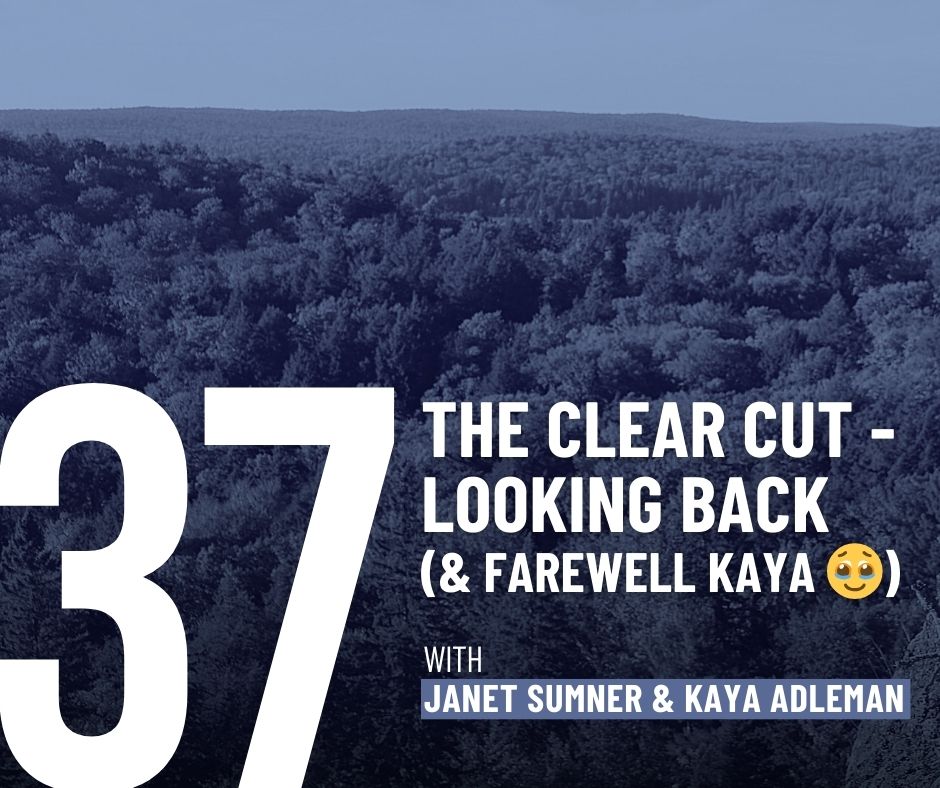
Join Jan Sumner and Kaya Adleman for this special episode as they look back on all they’ve unpacked on the Clear Cut. It’s a bittersweet one as this is Kaya’s last time as co-host before the show goes on hiatus.
READ MORETopics include: misguided industry responses to fire suppression, deceptive practices, greenwashing and pathways to a reimagined future for forestry management in Canada.
We extend our heartfelt gratitude to Kaya for taking us on an exploratory journey of Canada’s forests and forestry practices.
Thank you for listening!
READ LESS